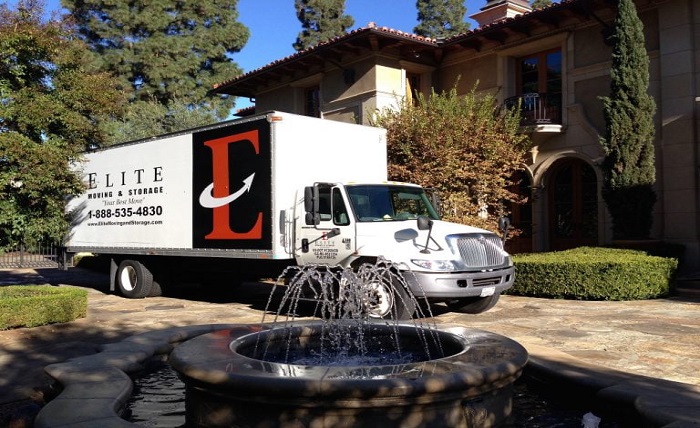Executive Large Office Moving Services Sherman Oaks: A Comprehensive Guide

Moving to a new office is a major undertaking that requires careful planning and execution. This is especially true for large corporations and executive offices that require precision, security, and professionalism when relocating. In this article, we’ll cover everything you need to know about executive large office moving services in Sherman Oaks, including the benefits, challenges, and best practices to ensure a successful move.
Table of Contents
- Introduction
- Benefits of Hiring Professional Office Movers
- Challenges of Office Relocation
- Preparing for an Executive Large Office Move
- Setting a Budget
- Choosing a Moving Company
- Creating a Moving Plan
- Communicating with Employees
- Packing and Labeling
- The Moving Process
- Loading and Transportation
- Unloading and Set-Up
- Post-Move Evaluation and Follow-Up
- Tips for a Successful Executive Office Move
- Conclusion
- FAQs
1. Introduction
Moving an executive office is a major undertaking that requires careful planning and execution. Whether you’re expanding to a new location or simply relocating to a more suitable space, the process can be both exciting and daunting. In this article, we’ll cover everything you need to know about executive large office moving services in Sherman Oaks, including the benefits, challenges, and best practices to ensure a successful move.
2. Benefits of Hiring Professional Office Movers
Hiring a professional office moving company can provide numerous benefits for your executive office move. First and foremost, professional movers are experienced and trained to handle all aspects of the move, including packing, loading, transportation, unloading, and set-up. They also have access to specialized equipment and materials, such as heavy-duty packing supplies, dollies, and moving trucks, which can ensure the safety and security of your office equipment and furniture.
Additionally, professional office movers can help minimize downtime and disruption to your business operations. By working efficiently and strategically, they can complete the move in a timely manner, allowing your employees to return to work as soon as possible. They can also provide guidance and support throughout the moving process, including advice on how to pack and label items, and how to minimize damage or loss. Explore the numerous benefits of hiring professional office movers, such as reduced stress and enhanced efficiency, at https://www.shiply.com/us/
3. Challenges of Office Relocation
Moving an executive office also presents a number of challenges that should be taken into consideration. These include:
- Logistics: Moving a large office requires careful coordination and planning, including scheduling, transportation, and storage.
- Data Security: Moving confidential or sensitive data can be a major concern for many businesses. Ensuring the security of your data during the move is crucial.
- Employee Communication: It’s important to keep your employees informed and involved throughout the moving process, including providing updates, answering questions, and addressing concerns.
- Damage and Loss: Moving expensive and delicate equipment and furniture can be risky, and there is always the potential for damage or loss during transportation.
4. Preparing for an Executive Large Office Move
To ensure a successful executive office move, it’s important to take the time to prepare and plan ahead. Here are some key steps to consider:
Setting a Budget
Moving an executive office can be costly, so it’s important to set a budget and allocate resources accordingly. Consider all expenses, including packing supplies, transportation, storage, and any additional services, such as IT support or equipment installation.
Choosing a Moving Company
When selecting a professional office moving company, look for a provider with a proven track record of success, experienced staff, and a comprehensive range of services. Request quotes from multiple companies, and compare their offerings and prices to find the best fit for your needs.
Creating a Moving Plan
Develop a detailed moving plan that outlines every step of the move, from packing to set-up. Include timelines, checklists, and task assignments to ensure that everyone is on the same page and working efficiently. Consider hiring a professional project manager to oversee the move and ensure that everything runs smoothly.
Communicating with Employees
Keep your employees informed and involved throughout the moving process. Hold regular meetings or send out regular updates to keep everyone informed of the move’s progress and any changes or updates. Address any concerns or questions they may have, and provide clear instructions for packing and labeling their personal belongings.
Packing and Labeling
Proper packing and labeling is crucial to ensure that your office equipment and furniture arrive at their destination safely and securely. Consider hiring professional packers to handle this task, or provide detailed instructions to your employees to ensure that everything is packed and labeled correctly.
5. The Moving Process
On moving day, your professional movers will handle all aspects of the move, including loading, transportation, unloading, and set-up. Be sure to have a representative on-site to oversee the process and address any concerns or issues that may arise.
Loading and Transportation
Your professional movers will carefully load your office equipment and furniture onto their specialized moving trucks, ensuring that everything is securely packed and properly labeled. They will then transport your items to your new location, taking care to avoid any damage or loss along the way.
Unloading and Set-Up
Upon arrival at your new location, your professional movers will carefully unload and set up your office equipment and furniture according to your specifications. They will also unpack and reassemble any items that were disassembled for transportation.
6. Post-Move Evaluation and Follow-Up
After the move is complete, take the time to evaluate the process and identify any areas for improvement. Conduct a post-move review with your employees and your professional movers to gather feedback and identify any issues or challenges that arose during the move. This will help you to improve your processes and ensure a smoother move in the future.
7. Tips for a Successful Executive Office Move
- Start planning early and allow plenty of time for the move.
- Hire a professional office moving company with a proven track record of success.
- Communicate regularly with your employees and keep them informed and involved throughout the process.
- Develop a detailed moving plan and timeline, and assign tasks and responsibilities to ensure that everyone is on the same page.
- Properly pack and label all items to ensure safe and secure transportation.
- Conduct a post-move review to gather feedback and identify areas for improvement.
8. Conclusion
Moving an executive office is a complex and challenging task, but with the right planning and preparation, it can be a smooth and successful process. By hiring a professional office moving company and following these best practices, you can ensure that your move is completed on time, within budget, and with minimal disruption to your business operations.
9. FAQs
- How long does an executive office move typically take?
- The length of time it takes to move an executive office can vary depending on a number of factors, including the size of the office, the distance of the move, and the complexity of the equipment and furniture being moved. A professional moving company can provide a more accurate estimate based on your specific needs.
- Can I pack and move my office equipment and furniture myself?
- While it’s possible to pack and move your office equipment and furniture yourself, it’s generally not recommended. Professional movers have the experience, equipment, and training needed to ensure safe and secure transportation, and can help minimize the risk of damage or loss.





